13 video game consoles you've probably never heard of
The Fairchild Channel F (1976)

The Epoch Cassette Vision (1981)
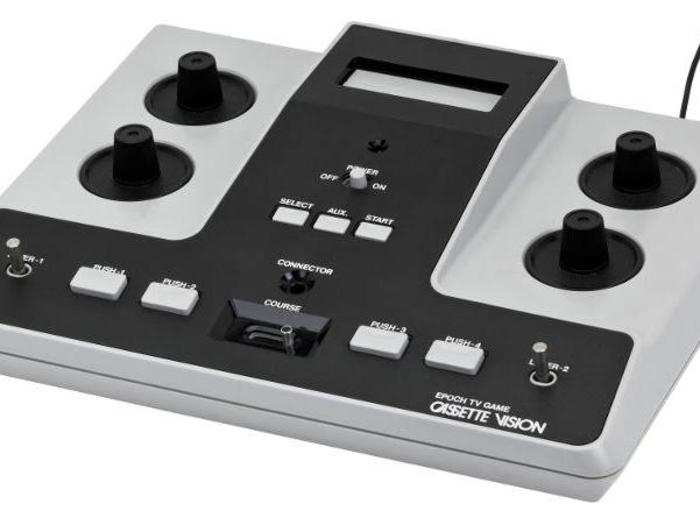
A lot of these little-known consoles are tragically lost to history, but some of them are probably better off forgotten. One such example is the Epoch Cassette Vision, whose main design feature is that the controllers are built into the console itself, meaning that players had to hold the entire console on their lap as they played.
Want to play a game with a friend? You'll have to put the console/controllers between the two of you and sit half-turned towards each other as you play, while deeply resisting the urge to yank it away from them if you start losing.
The Vectrex (1982)
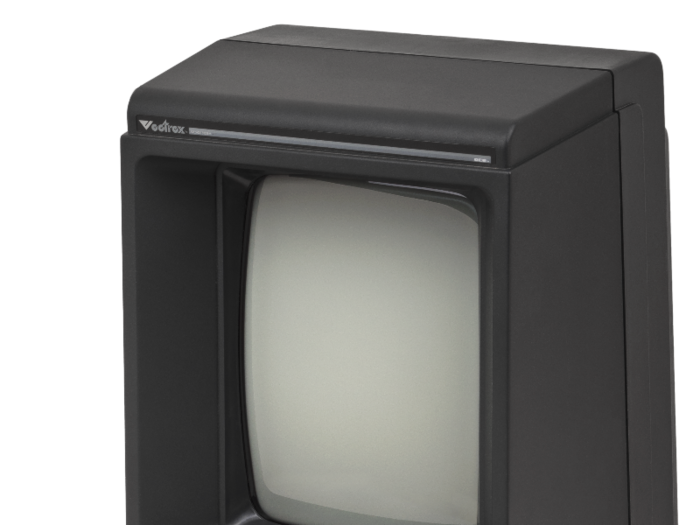
The word "gimmick" gets thrown at Nintendo a lot for the unusual ideas at the heart of its recent consoles, but the Vectrex takes things to a whole other level.
The Vectrex actually came with its own display, but instead of actually having a screen that could display color, the Vectrex just came with a bunch of colored plastic overlays that would imbue the black and white graphics with a uniform green, red, or whatever-colored tint.
For example, this is what the overlay for the game "Mine Storm" looked like. Fancy.
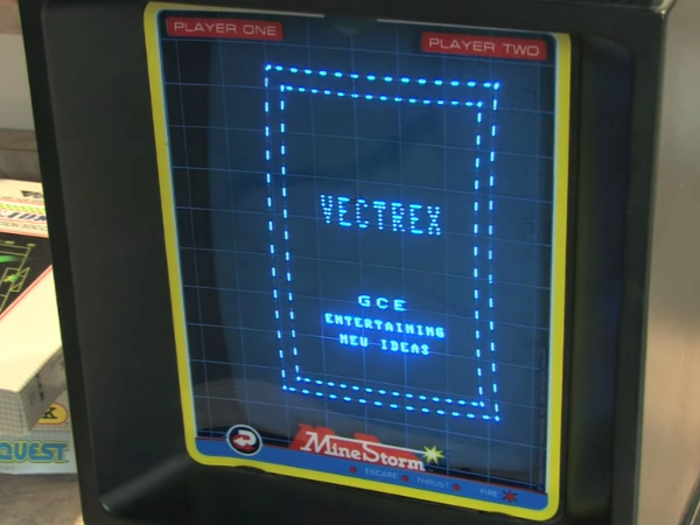
Atari Lynx (1989)
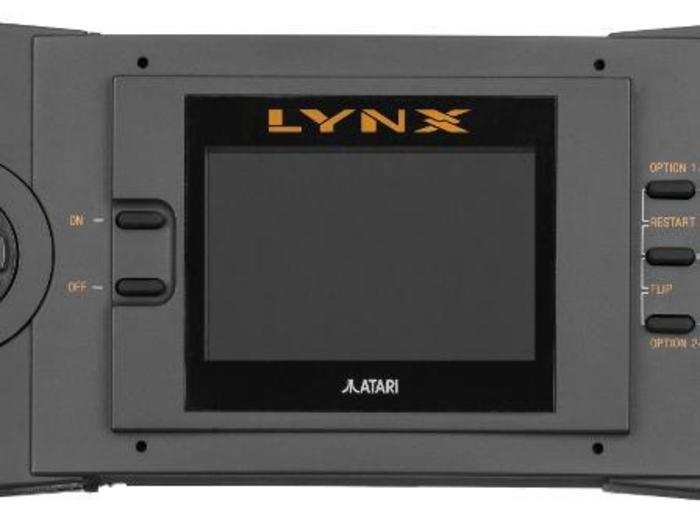
The same year Nintendo's Game Boy was released, Atari put out something far more advanced, but far less successful or recognizable: The Atari Lynx.
Unlike its competitors, the Lynx had a backlit color screen — the Game Boy Color wouldn't come out for nearly 10 more years — but it was ultimately outshined by the larger video game libraries on the Game Boy and the Sega Game Gear.
Philips CD-i (1991)
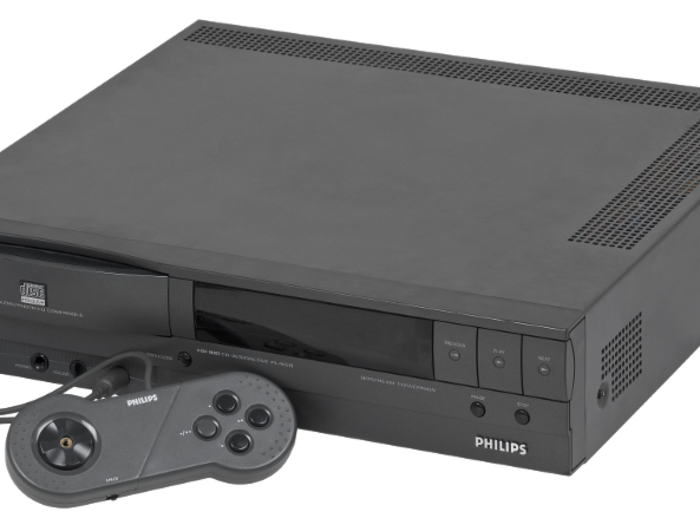
Much like the Fairchild Channel F, the Philips CD-i was quietly revolutionary, but lost the spotlight to a bigger, better console in the long-run.
In this case, the Philips CD-i was the first video game console to support games on compact discs, but it was marketed as more of a home entertainment platform rather than a video game console. As such, it ended up playing second fiddle to later disc-based gaming systems like the Sony PlayStation.
Weirdly enough, the CD-i is also the only non-Nintendo console to ever exclusively feature Nintendo games, including "Link: The Faces of Evil," "Zelda: The Wand of Gamelon," and "Hotel Mario," all of which, by most accounts, are pretty terrible.
If you need proof, check out this bizarre cutscene from "Hotel Mario" that looks like an animated version of an off-brand coloring book (starts at 0:25):
Pioneer LaserActive (1993)
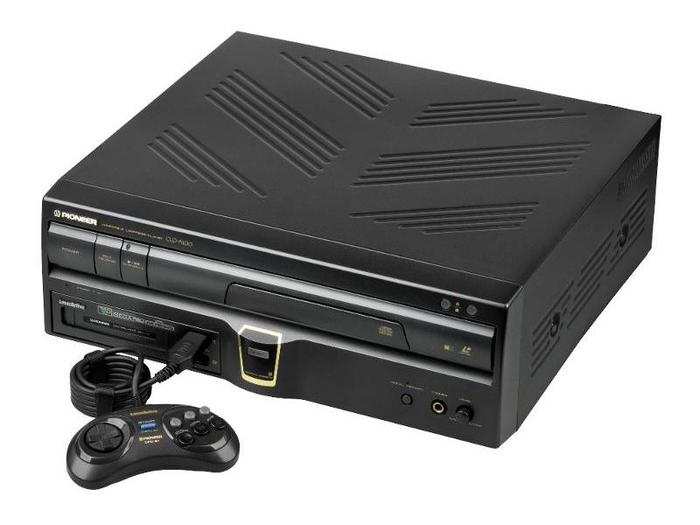
Remember LaserDiscs, the ill-fated alternative to VHS? No? Well how about a video game console that supported games on the LaserDisc format that cost nearly $1,000?
Suddenly, the reasons why you've probably heard of the Pioneer LaserActive are pretty clear.
In reality, the LaserActive actually offered its 10,000 owners a fair amount of utility, because it could also play regular LaserDiscs as well as Sega Genesis and TurboGrafx-16 games. You just had to be willing to bet on the LaserDisc format and, well, we know how that turned out.
3DO (1993)
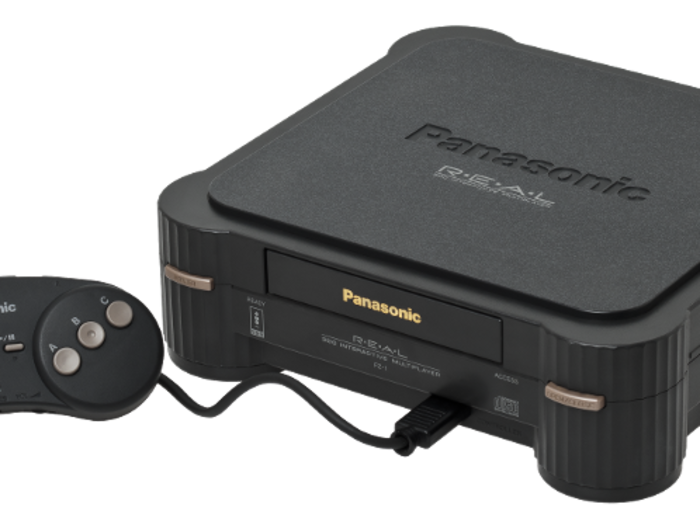
Unlike most other game consoles, the 3DO could be made by any company that licensed the design from the 3DO company. In this way, the 3DO was kind of like a DVD or CD player, in that they weren't made by just one manufacturer.
This meant that 3DOs didn't have one single set of system specs; depending on which company was manufacturing it, the 3DO would vary slightly. This, mixed with its early use of disc-based games made it fairly innovative for the time, but its hefty price tag and its push to be a multimedia player doomed it to failure.
Sega 32X (1994)
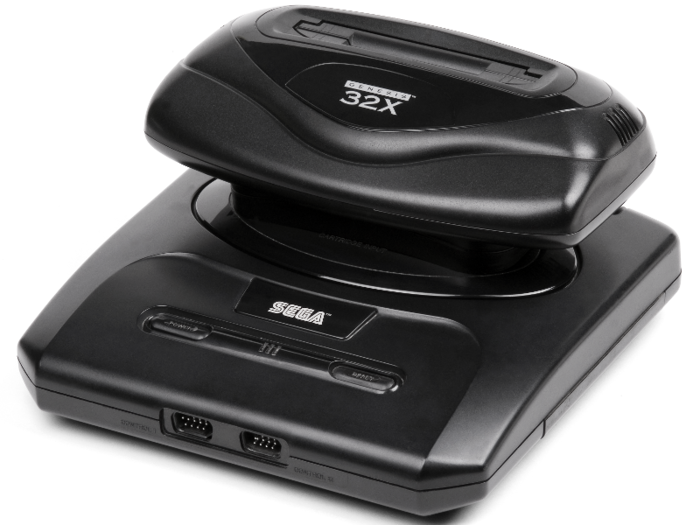
Though not technically a game console in its own right the Sega 32X is just strange enough to be included here.
The 32X was an add-on for the Sega Genesis, plugging directly into the cartridge slot, which allowed it to play games that the standard Genesis couldn't. It was kind of a step halfway between the the Sega Genesis and its successor, the Sega Saturn.
It didn't do particularly well, partly because a lot of people didn't really understand what it did, and also because most people just wanted to wait for the Sega Saturn. It probably doesn't help that the 32X only had 34 games over a period of two years.
Nintendo Virtual Boy (1995)
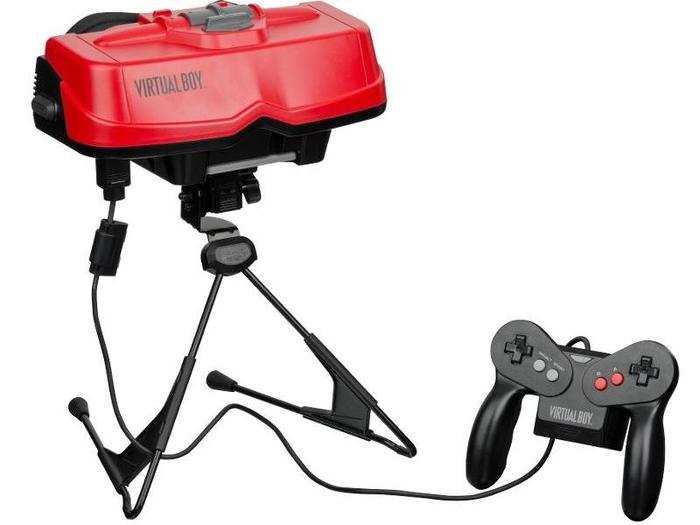
The HTC Vive and the Oculus Rift virtual reality headsets are on the forefront of gaming technology, but Nintendo was (arguably, too far) ahead of the trend when it released the Virtual Boy headset in 1995.
It only had 22 games over its entire life cycle, all of which had a harsh black-and-red color scheme. One such game was "Mario's Tennis," which you can take a peek at below:
Nintendo sold fewer than 800,000 units total, which many people think is because it's hard to show someone what it's like to use a virtual reality headset through an advertisement — one can only truly understand it once it's been experienced firsthand.
Oddly enough, that's a problem still plaguing virtual reality headsets on the market today, but retailers like Best Buy are letting people try PlayStation's VR headset in several stores across the country so as not to repeat the Virtual Boy's unfortunate demise.
Game.com (1997)
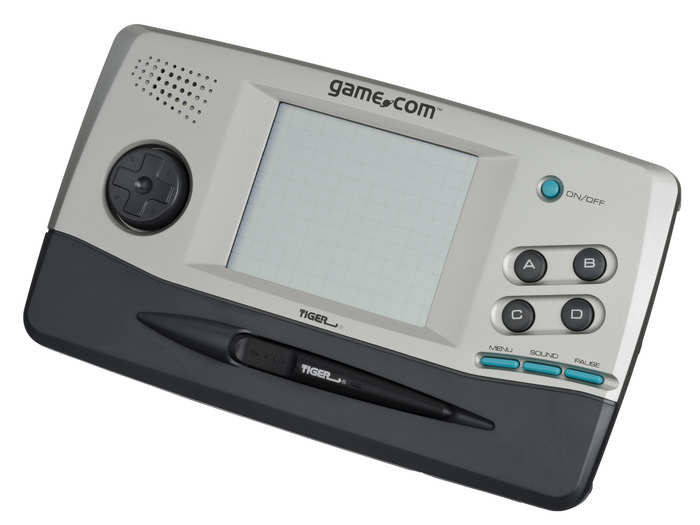
The Game.com (pronounced "game com"), made by Tiger, was sort of an early ancestor to the Nintendo DS, in that it was a handheld video game console that came with a touchscreen and a stylus. Additionally, the Game.com had some PDA-like features, like its built-in calculator, calendar, and an address book. Notably, it could also connect to the internet when it was connected to a modem. That is, if all you wanted to do was send an email or look at a text-only version of a website.
Though it featured some innovative design ideas that would later become standard in Nintendo handheld consoles, the Game.com was a flop and Tiger decided to turn its focus towards other consumer electronics, like Furbies. (Just seeing the name alone is enough to give me chills.)
Nintendo 64DD (1999)
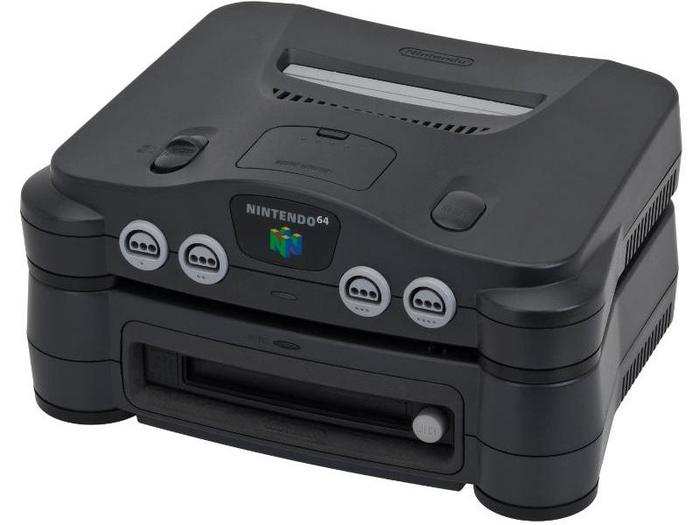
Everything about this add-on for the Nintendo 64 was doomed from the start. It utilized the magnetic disc format (kind of like a hybrid between a CD-ROM and a floppy disc), which was already lacking in popularity by the time the 64DD came out. CD-ROMs were already being widely used, were much cheaper to manufacture, and could store more data.
The 64DD reportedly only ever sold 15,000 units, leaving the remaining 85,000 units for the dump.
It's quite sad, really, because the 64DD had some interesting ideas at its core: It was billed as a tool for Nintendo's more artistic customers, allowing users to capture images from a TV, create 3D models, and design songs for the racing game "F-Zero." There was even a sort of online network that would allow 64DD users to connect with each other and share what they'd made with one another.
Unfortunately, the execution was severely lacking. Only nine games were ever released for the 64DD — four of which, as Giant Bomb notes, were various iterations of "Mario Paint."
N-Gage (2003)
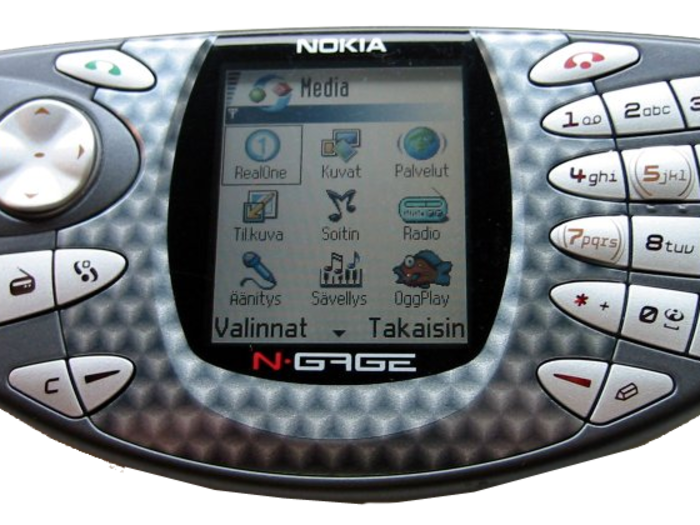
It turns out that when you try to combine a phone with a handheld gaming device, you get a terribly designed monstrosity that can't really do either. At least, that's what happened with the N-Gage.
One of its biggest problems was the fact that you had to remove the device's battery in order to switch games. Additionally, the awkward placement of the speaker meant that users had to hold the edge of the phone against their ear, which, as was noted in Fortune magazine, made it look like they were speaking into a taco.
Gizmondo (2005)
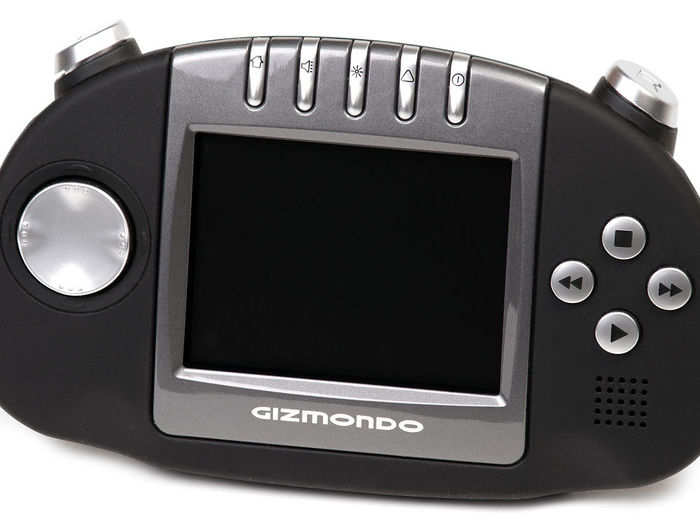
Niantic, the company that makes Pokémon Go, is at the center of a conversation about augmented reality and the potential for video games that intertwine with real-world locations, but this is not the first time this conversation has come up.
The Gizmondo was a handheld gaming console that's notable, partly, for its ability to track users through GPS. One game, called "Colors," would have allowed players to guard real-life locations in their neighborhoods from rival players, much like the Gym system in Pokémon Go.
The other reason the Gizmondo is so notable is because of the stranger-than-fiction story behind the people who made it.
One of its executives, Stefan Eriksson, became the center of a media firestorm after crashing a Ferrari Enzo at nearly 200 miles-per-hour, which led to US authorities discovering Erikkson had ties to the Swedish mafia (Seriously, the story is insane.) These events certainly weren't the only thing plaguing Gizmondo, but they didn't help.
Ultimately, the company that made Gizmondo went bankrupt and folded within a year of releasing the console in very limited amounts, selling fewer than 25,000 units and vanishing into obscurity.
Popular Right Now
Popular Keywords
- India’s wearables market decline
- Vivo V40 Pro vs OnePlus 12R
- Nothing Phone (2a) Plus vs OnePlus Nord 4
- Upcoming smartphones launching in August
- Nothing Phone (2a) review
- Current Location in Google
- Hide Whatsapp Messages
- Phone is hacked or not
- Whatsapp Deleted Messages
- Download photos from Whatsapp
- Instagram Messages
- How to lock facebook profile
- Android 14
- Unfollowed on Instagram
Advertisement